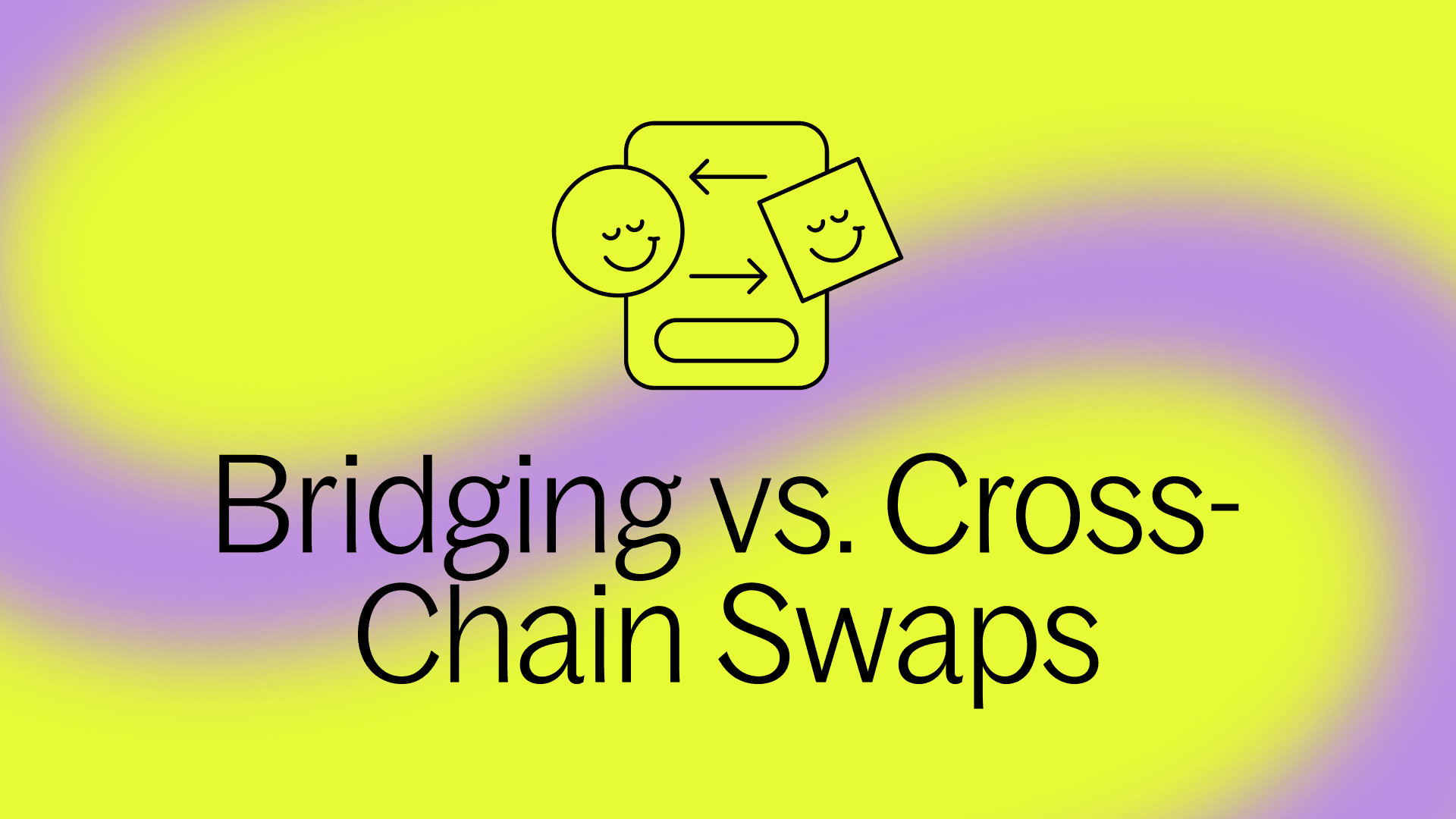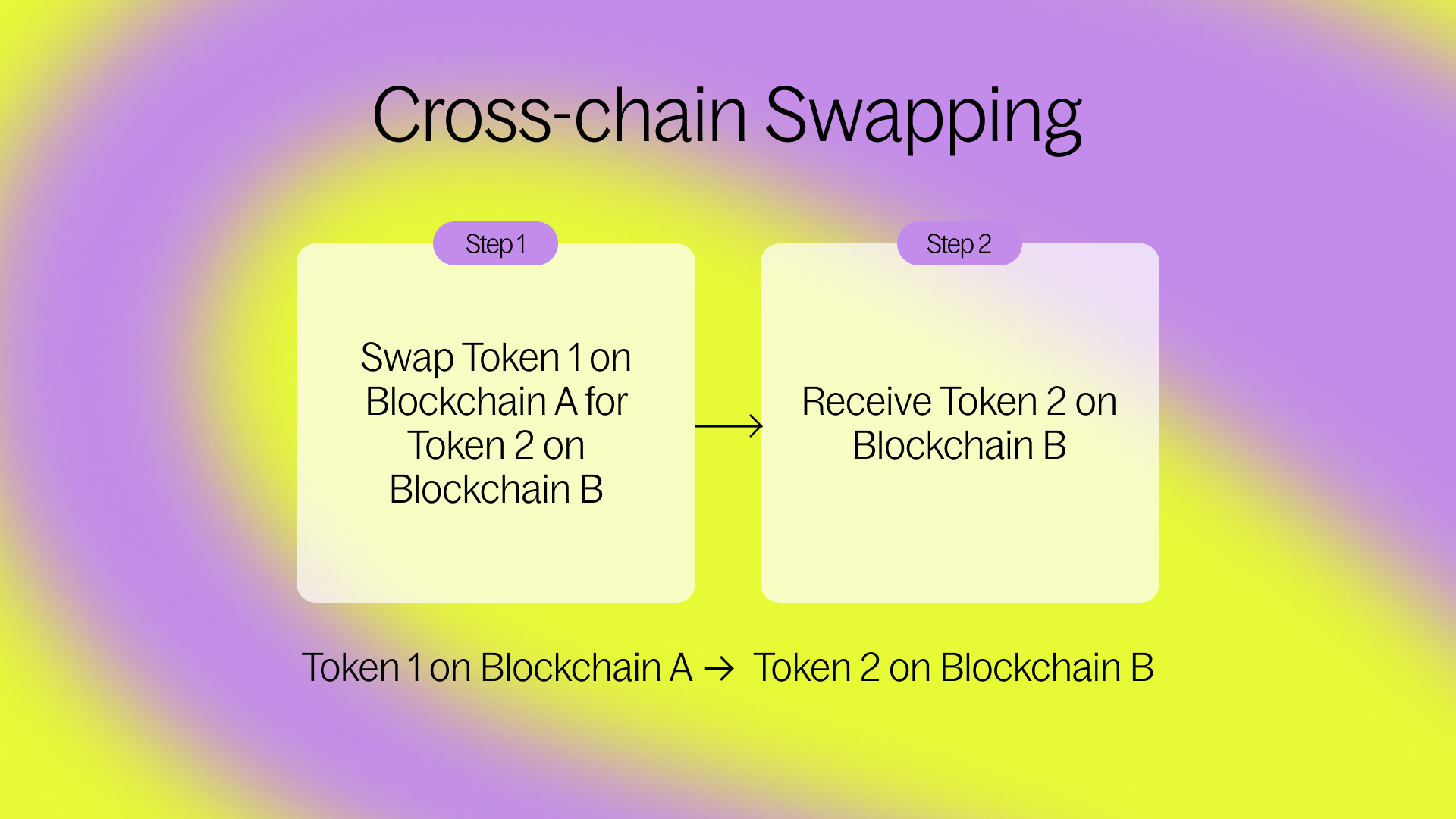Bridging vs. Cross-chain Swaps

Cross-chain swaps vs. bridging
We’ll go into more detail later, but simply put: certain applications (like Squid), allow you to swap tokens and move across chains simultaneously. When you swap cross-chain, you eliminate an entirely separate step. It’s faster, easier, and cheaper.
What’s the difference between bridging and swapping cross-chain?
In crypto, traditional bridges enable the transfer of tokens and data from one blockchain to another blockchain. However, the selection of transferrable tokens and chains can be limited by available liquidity and routing capabilities of a specific bridge.
The token you bridge from one chain is the same token you receive on the destination chain. Only after bridging can you swap the tokens received for the tokens desired.

Cross-chain swapping takes bridging one step further, enabling the transfer of tokens and assets from one blockchain for the desired assets on another blockchain. Meaning, you can swap the tokens you have from one chain, for the tokens you want on another chain. All in one action.
